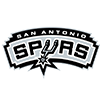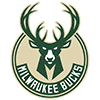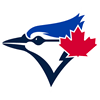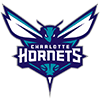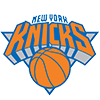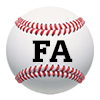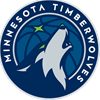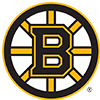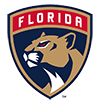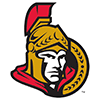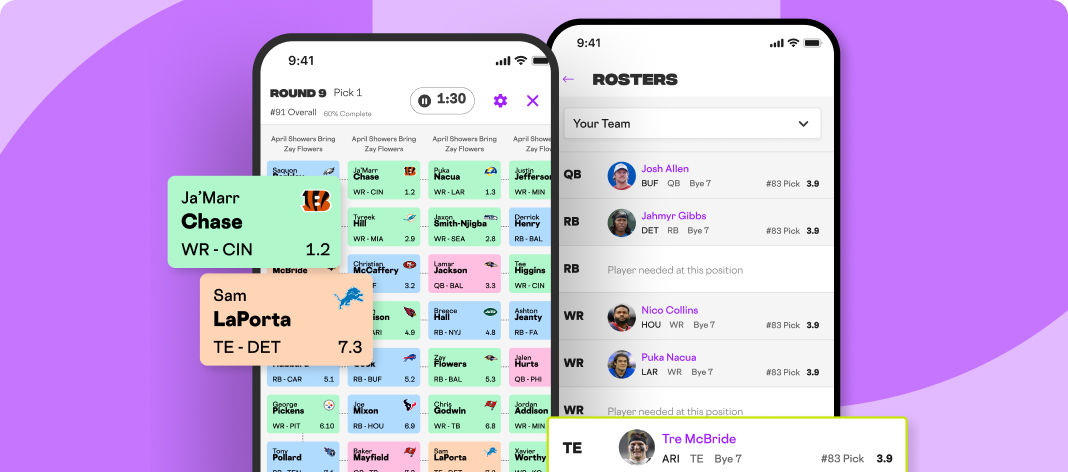It's always nice to see a hitter make a notable in-season improvement at the plate, whether that's making better swing decisions, making more consistent contact or pulling the ball in the air more often. But it's not always meaningful and doesn't always lead to improved results.
Adjustments at the plate nearly always come with a tradeoff. Start swinging harder to generate more power? It will probably work, but it'll come with a loss of contact. Ease up to prioritize contact? That will probably work, too, but it'll come with a loss of power.
In this article, I'll be taking a look at hitters who have improved in three key areas this season: O-Swing%, Contact% and Pulled Air%. Comparing their numbers from the first three months of the year to their numbers since July 1, the hitters in this article are chasing less often, making contact more often, and making the type of contact that tends to lead to doubles and home runs.
This week's risers consist of hitters who are improving in those three areas who have also had those improvements show up in the form of better results. This week's fallers are labeled "Fallers (for Now)," as while they may have seen their results drop off since midseason, their better process across the board should soon lead to those results turning around.
Risers
We'll go over five players who have made across-the-board improvements in detail in a moment, but first, a list of all 24 hitters who have improved
It's always nice to see a hitter make a notable in-season improvement at the plate, whether that's making better swing decisions, making more consistent contact or pulling the ball in the air more often. But it's not always meaningful and doesn't always lead to improved results.
Adjustments at the plate nearly always come with a tradeoff. Start swinging harder to generate more power? It will probably work, but it'll come with a loss of contact. Ease up to prioritize contact? That will probably work, too, but it'll come with a loss of power.
In this article, I'll be taking a look at hitters who have improved in three key areas this season: O-Swing%, Contact% and Pulled Air%. Comparing their numbers from the first three months of the year to their numbers since July 1, the hitters in this article are chasing less often, making contact more often, and making the type of contact that tends to lead to doubles and home runs.
This week's risers consist of hitters who are improving in those three areas who have also had those improvements show up in the form of better results. This week's fallers are labeled "Fallers (for Now)," as while they may have seen their results drop off since midseason, their better process across the board should soon lead to those results turning around.
Risers
We'll go over five players who have made across-the-board improvements in detail in a moment, but first, a list of all 24 hitters who have improved in all three areas this season while also improving their overall batting line:
| Name | wRC+ Change | O-Swing% Change | Contact% Change | Pulled Air% Change |
|---|---|---|---|---|
| Nick Kurtz | +106 | -4.2% | +1.4% | +8.4% |
| Jared Triolo | +93 | -7.1% | +2.0% | +1.3% |
| George Springer | +92 | -0.5% | +2.6% | +2.1% |
| Tommy Pham | +76 | -3.9% | +3.1% | +3.3% |
| Brayan Rocchio | +75 | -2.7% | +1.2% | +9.9% |
| Trevor Story | +58 | -4.0% | +3.1% | +9.0% |
| Josh Jung | +48 | -3.2% | +3.4% | +0.4% |
| Corey Seager | +47 | -4.2% | +4.4% | +1.7% |
| Kyle Stowers | +41 | -5.8% | +2.2% | +1.7% |
| Julio Rodriguez | +37 | -2.9% | +4.1% | +0.7% |
| Vinnie Pasquantino | +27 | -2.2% | +1.6% | +2.2% |
| Matt Wallner | +25 | -1.6% | +5.5% | +1.9% |
| Cody Bellinger | +23 | -0.5% | +4.7% | +2.2% |
| Lenyn Sosa | +19 | -11.8% | +4.1% | +6.5% |
| Ben Rice | +16 | -0.8% | +2.9% | +1.8% |
| Vladimir Guerrero Jr. | +15 | -4.0% | +0.8% | +1.9% |
| Jonah Heim | +12 | -2.2% | +5.8% | +1.4% |
| Rafael Devers | +10 | -0.9% | +3.7% | +8.3% |
| Ian Happ | +9 | -5.7% | +2.6% | +2.9% |
| Spencer Horwitz | +8 | -2.6% | +7.3% | +3.1% |
| Mauricio Dubon | +7 | -5.0% | +1.7% | +3.8% |
| Spencer Steer | +5 | -0.9% | +5.5% | +2.3% |
| Mike Trout | +4 | -0.2% | +0.2% | +9.3% |
| Mike Yastrzemski | +2 | -2.8% | +5.1% | +7.8% |
Note: to qualify for the leaderboards in this article, players must have 100 plate appearances by the end of June and 100 more since the start of July.
 Nick Kurtz, 1B, Athletics: Plenty has been written about Kurtz's outstanding rookie season already, but he deserves every paragraph. His place atop the above table serves as a reminder of just how big of an in-season improvement he's made in his rookie season. Kurtz arrived in late April and merely held his own for a month before hitting the injured list with a strained hip flexor. He returned in early June and took a few games to get going, but since June 15, he's been the best hitter in the league.
Nick Kurtz, 1B, Athletics: Plenty has been written about Kurtz's outstanding rookie season already, but he deserves every paragraph. His place atop the above table serves as a reminder of just how big of an in-season improvement he's made in his rookie season. Kurtz arrived in late April and merely held his own for a month before hitting the injured list with a strained hip flexor. He returned in early June and took a few games to get going, but since June 15, he's been the best hitter in the league.
Kurtz's 220 wRC+ since that date is well above George Springer (196) in second place. He ranks third in batting average (.342) since the start of July, tied for fourth in homers (24) and leads all qualified hitters in both on-base percentage (.453) and slugging (.743). The fact those numbers are backed by better swing decisions, more consistent contact, and more pulled flyballs and line drives makes it easier to trust that the good times will continue.
If there's any lingering worry here, it's the fact that his strikeout rate sits at a worryingly high 30.4 percent (29.0 percent since June 15), but it's possible to spin that as a positive. He's proven he can have plenty of success even with a high strikeout rate, and he's still just a 22-year-old rookie with plenty of time to make further adjustments. If he's able to continue making contact gains in the future, there could still be another level for Kurtz to reach.
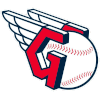 Brayan Rocchio, 2B/SS, Guardians: Rocchio recorded a .600 OPS in a 23-game cup of coffee in 2023 and then struggled to a .614 OPS in his first full season last year. He was then sent down in mid-May this season after hitting .165/.235/.198 in his first 35 games. If you thought that was the end of the line for Rocchio as a major-league regular, that wasn't unreasonable, but this is a 24-year-old we're talking about who peaked as a top-15 fantasy prospect prior to this debut. There was still plenty of time for him to make some adjustments.
Brayan Rocchio, 2B/SS, Guardians: Rocchio recorded a .600 OPS in a 23-game cup of coffee in 2023 and then struggled to a .614 OPS in his first full season last year. He was then sent down in mid-May this season after hitting .165/.235/.198 in his first 35 games. If you thought that was the end of the line for Rocchio as a major-league regular, that wasn't unreasonable, but this is a 24-year-old we're talking about who peaked as a top-15 fantasy prospect prior to this debut. There was still plenty of time for him to make some adjustments.
Rocchio returned to the big leagues at the start of July, and while he's hardly turned heads since then, he's settled in as a perfectly capable everyday middle infielder. His .262/.307/.396 slash line since July 1 is good for a 95 wRC+, just slightly worse than league average. A mere four homers and four steals over that stretch limit his fantasy appeal to deep leagues, but he's firmly back on the radar in those formats, and his improvement across the board in O-Swing%, Contact% and Pulled Air% makes it easier to believe he'll remain a viable option.
Rocchio still needs to add more strength if he's to turn those extra pulled flyballs into genuine power, but a 35.6 percent hard-hit rate since July 1 at least pulls him out of the basement in that category. He owned a career 23.2 percent hard-hit rate prior to that point, a number that simply doesn't work unless it's accompanied by Luis Arraez/Steven Kwan/Jacob Wilson levels of strikeout avoidance.
 Kyle Stowers, OF, Marlins: Stowers has been one of the breakout stories of the year, and that breakout has only gotten more impressive as the season has gone on. The 27-year-old failed to live up to his prospect potential in his first three partial seasons, slashing .208/.268/332 (69 wRC+) with just six homers in 117 games. Through the end of June this year, however, he'd homered 13 times in 78 games while slashing .279/.357/.498 (good for a 134 wRC+). Notably, his 28.6 percent strikeout rate, while high, was much better than his 33.8 percent mark from his first three seasons.
Kyle Stowers, OF, Marlins: Stowers has been one of the breakout stories of the year, and that breakout has only gotten more impressive as the season has gone on. The 27-year-old failed to live up to his prospect potential in his first three partial seasons, slashing .208/.268/332 (69 wRC+) with just six homers in 117 games. Through the end of June this year, however, he'd homered 13 times in 78 games while slashing .279/.357/.498 (good for a 134 wRC+). Notably, his 28.6 percent strikeout rate, while high, was much better than his 33.8 percent mark from his first three seasons.
But Stowers' progress wasn't done. By chasing less and getting his bat on the ball more often, he's trimmed his strikeout rate still further to 25.0 percent since July 1, helping him hit .306/.391/.634 (175 wRC+). He's also added 12 more homers in 39 games, helped by an increase in Pulled Air %.
With a 19.0 percent barrel rate on the season, Stowers has more than enough power to withstand some moderate contact concerns. Those are still present, but if he keeps making progress as he's done in the second half, he could even reach another level next season.
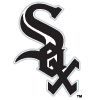 Lenyn Sosa, 1B/2B/3B, White Sox: Sosa has the largest improvement in O-Swing% on the above chart, paired with the eighth-largest improvement in Contact% and the seventh-largest improvement in Pulled Air%. The result has been a transformation into an entirely new type of player.
Lenyn Sosa, 1B/2B/3B, White Sox: Sosa has the largest improvement in O-Swing% on the above chart, paired with the eighth-largest improvement in Contact% and the seventh-largest improvement in Pulled Air%. The result has been a transformation into an entirely new type of player.
From his debut in 2022 through the end of June this year, Sosa was nothing more than a standard-issue utility man, slashing .242/.268/.365 (73 wRC+) while averaging a modest 15 homers per 600 plate appearances. Since then, he's hit .251/.295/.460 (106 wRC+), averaging 34 homers per 600 plate appearances. His career barrel rate sat at 7.2 percent through the end of June but has been at 11.7 percent since the start of July.
Sosa remains overly aggressive at the plate and doesn't get on base often enough, but he now has more than enough power to make up for it. He's also still just 25 years old, so if he starts to add a more patient approach to his improving profile at the plate, there could still be another level here.
 Mike Trout, OF, Angels: While I'm mostly interested for the purposes of this article in hitters who have made notable across-the-board changes, Trout deserves a mention for a different type of improvement. His improvements in OSwing% and Contact% are negligible, but it's nonetheless notable that he's managed to hold his ground in both those areas while posting the second-biggest increase in Pulled Air% on the above chart.
Mike Trout, OF, Angels: While I'm mostly interested for the purposes of this article in hitters who have made notable across-the-board changes, Trout deserves a mention for a different type of improvement. His improvements in OSwing% and Contact% are negligible, but it's nonetheless notable that he's managed to hold his ground in both those areas while posting the second-biggest increase in Pulled Air% on the above chart.
We've seen a very different Mike Trout this season than what we're used to. His .229 batting average is well below his career .294 mark, and his 31.2 percent strikeout rate is well above his career strikeout rate of 22.9 percent. He's attempting to counteract that by pulling everything in the air, which theoretically could lead to a future where he spends the latter years of his career providing enough power to offset a poor batting average and a lack of speed.
Trout's 14.3 percent barrel rate this season is still very good, even if it's his lowest mark since 2017. It's not hard to envision this version of Trout working out, but the results have been disappointing for now, as his wRC+ has barely improved with the change and he's gone over a month since his last home run.
Fallers (for now)
The following 17 players have improved in all three key areas this season but have nonetheless seen their wRC+ drop:
| Name | wRC+ | O-Swing% | Contact% | Pulled Air % |
|---|---|---|---|---|
| Trevor Larnach | -1 | -4.6% | +3.9% | +1.5% |
| Drake Baldwin | -2 | -1.5% | +0.7% | +2.4% |
| Ceddanne Rafaela | -2 | -1.0% | +2.4% | +8.0% |
| Bo Naylor | -4 | -7.0% | +7.2% | +9.9% |
| Mookie Betts | -6 | -0.9% | +3.6% | +0.3% |
| Maikel Garcia | -9 | -6.2% | +3.1% | +2.3% |
| Marcell Ozuna | -10 | -1.5% | +1.0% | +1.8% |
| Jackson Holliday | -13 | -4.8% | +2.9% | +0.1% |
| Freddie Freeman | -17 | -2.0% | +2.4% | +1.8% |
| Corbin Carroll | -21 | -1.4% | +0.6% | +1.0% |
| Mitch Garver | -23 | -2.1% | +5.7% | +2.7% |
| Gabriel Arias | -23 | -1.8% | +9.2% | +4.0% |
| Otto Lopez | -28 | -1.6% | +3.2% | +0.6% |
| Andy Pages | -30 | -8.3% | +0.7% | +2.0% |
| Pete Crow-Armstrong | -38 | -8.1% | +1.1% | +0.4% |
| Victor Scott II | -38 | -5.1% | +4.8% | +11.2% |
| Brendan Donovan | -38 | -1.1% | +1.7% | +2.8% |
 Bo Naylor, C, Guardians: The results haven't been there for Naylor this season, either before or after July 1. He hit just .168/.272/.359 prior to the midpoint of the season and has hit .192/.280/.328 since. His 74 wRC+ on the season is an exact match for his mark from last year. He's just 25 years old, and catchers do often take longer to develop, but it's beginning to look like his bat might be too light to be a major-league starting catcher.
Bo Naylor, C, Guardians: The results haven't been there for Naylor this season, either before or after July 1. He hit just .168/.272/.359 prior to the midpoint of the season and has hit .192/.280/.328 since. His 74 wRC+ on the season is an exact match for his mark from last year. He's just 25 years old, and catchers do often take longer to develop, but it's beginning to look like his bat might be too light to be a major-league starting catcher.
A look under the hood is a bit more encouraging, however. He's made big strides in all three of O-Swing%, Contact% and Pulled Air% since July 1, posting the second- or third-largest improvements in all three categories among the players listed above. His 21.9 percent O-Swing% over that stretch is much better than league average (28.0 percent), as is his 84.0 percent contact rate (league average is 77.1 percent). His 31.2 percent Pulled Air% since July 1 would rank sixth among qualified hitters if he'd maintained that mark since the start of the year.
Naylor has also maintained a barrel rate (8.0 percent) and hard-hit rate (39.0 percent) right around league average since the midpoint of the season. If he keeps making good swing decisions, getting the bat on the ball and pulling balls in the air, it shouldn't be long before Naylor eventually lives up to his promise at the plate. He could be a more viable second catcher in deep leagues next season than his surface-level numbers indicate.
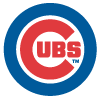 Pete Crow-Armstrong, OF, Cubs: Crow-Armstrong has hit a wall in the second half after being one of the top stories of the early part of the season. The 23-year-old five-tool phenom hit .265/.302/.544 (131 wRC+) prior to the All-Star break but owns a .225/.272/.377 slash line (76 wRC+) in the second half. He's started occasionally sitting against southpaws, against whom he's hit just .186/.220/.385 on the year.
Pete Crow-Armstrong, OF, Cubs: Crow-Armstrong has hit a wall in the second half after being one of the top stories of the early part of the season. The 23-year-old five-tool phenom hit .265/.302/.544 (131 wRC+) prior to the All-Star break but owns a .225/.272/.377 slash line (76 wRC+) in the second half. He's started occasionally sitting against southpaws, against whom he's hit just .186/.220/.385 on the year.
There were plenty of red flags to point to even while things were going well, such as his low on-base percentage and the fact that his impressive first-half power numbers came with a merely decent 42.0 percent hard-hit rate, so it's tempting to claim that his good luck has run out and he's been revealed as a fraud.
His inclusion on the table above casts some doubt on that narrative, however. Crow-Armstrong has cut his O-Swing% significantly over the last few months, and he's slightly more contact while maintaining his excellent Pulled Air% (28.5 percent for the year, 13th-highest among qualified hitters). If he's maintaining the same sort of profile which led to his first-half breakout and even making notable improvements in his swing decisions — something which should eventually lead to a decent walk rate (and thus more chances to steal bases), even if his second-half walk rate sits at 4.7 percent — there's plenty of reason to remain in on the young outfielder for next season.
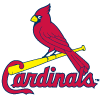 Victor Scott II, OF, Cardinals: Scott received plenty of fantasy hype heading into the 2024 season but fell flat, hitting .179/.219/.283 in 53 games. The hype was back to a lesser degree this past winter, and the speedy outfielder seemed to justify it early on, with his .245/.330/.339 slash line (93 wRC+) through the end of June more than good enough to justify an everyday role for a center fielder with a strong glove. Fantasy players who drafted him for his speed were getting exactly what they paid for, as his 22 steals tied him for fourth in the league.
Victor Scott II, OF, Cardinals: Scott received plenty of fantasy hype heading into the 2024 season but fell flat, hitting .179/.219/.283 in 53 games. The hype was back to a lesser degree this past winter, and the speedy outfielder seemed to justify it early on, with his .245/.330/.339 slash line (93 wRC+) through the end of June more than good enough to justify an everyday role for a center fielder with a strong glove. Fantasy players who drafted him for his speed were getting exactly what they paid for, as his 22 steals tied him for fourth in the league.
Scott's .184/.279/.254 slash line (57 wRC+) since July 1 therefore looks worryingly like a reversion to his 2024 self. He's taken multiple steps forward that haven't shown up in his box-score numbers, however, becoming much more selective, making more contact and pulling more balls in the air. Those first two improvements have led to a much better strikeout rate, which has fallen from 27.2 percent through the end of June to 17.6 percent since the start of July. Eventually, that should lead to a higher batting average and more chances to steal bases.
One could argue, though, that Scott's big jump in Pulled Air% is a problem, as hitters who impact the ball as weakly as Scott probably shouldn't be hitting many balls in the air of any kind, pulled or otherwise. Scott owns a sixth-percentile hard-hit rate this season (27.0 percent) but has 100th-percentile sprint speed. He's only managed five homers on the year, just one of which has come since the start of July. He may be best served adopting an extreme groundball approach like Tampa Bay's Chandler Simpson, though such an extreme adjustment is difficult to make.







